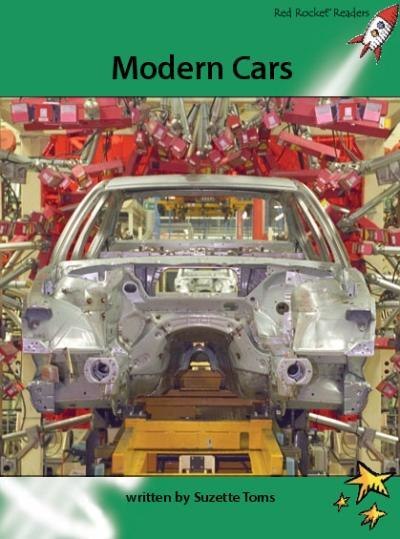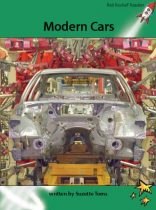Modern Cars
After Henry Ford invented the assembly line, the car manufacturing process remained unchanged for most of the 20th century. However, in the 1980s, with the introduction of computers the process went through another dramatic change: robots were introduced to do jobs once done by humans. Robot-assisted manufacturing allows a car to be made with much more exact welds and more accurate engineering than could be achieved with human workers. Cars today are made to a very high standard.
Additional information
| Page Count: | 24 |
|---|---|
| NextGen Science: | 3-5-ETS1-1 |
| TEKS: | TEKS§110.5(b)(6), TEKS§110.5(b)(8), TEKS§110.5(b)(3), TEKS§110.5(b)(7) |
| Word Count: | 830 |
| Belongs to Set: | Advanced Fluency 2 Non-Fiction Set A |
| Fiction or Non-Fiction: | Non-Fiction |
| Genre: | Descriptive |
| Guided Reading Level: | R |
| Reading Recovery Level: | 26 |
| Lexile Measure: | 1060L |
| DRA Level: | 40 |
| Author: | Suzette Toms |
| ISBN - Standard Edition | 9781776540228 |
| ISBN - US Edition | 9781776540228 |
| Artifact Tags: | Sequence of Events, Subject-specific vocabulary, Robots, Inventiveness, Main idea, Security/safety |
| Keywords: | decide, answer, whole, already, design, engine, measure, result |
| Common Core State Standards: | CCSS.ELA-LITERACY.RL.3.1, CCSS.ELA-LITERACY.RL.3.3, CCSS.ELA-LITERACY.RL.3.4, CCSS.ELA-LITERACY.RL.3.2 |
| EL Education Alignment: | 1-1 Tools and Work |
| International Baccalaureate: | 5 – How Things Are Made, 8 – Machines |


